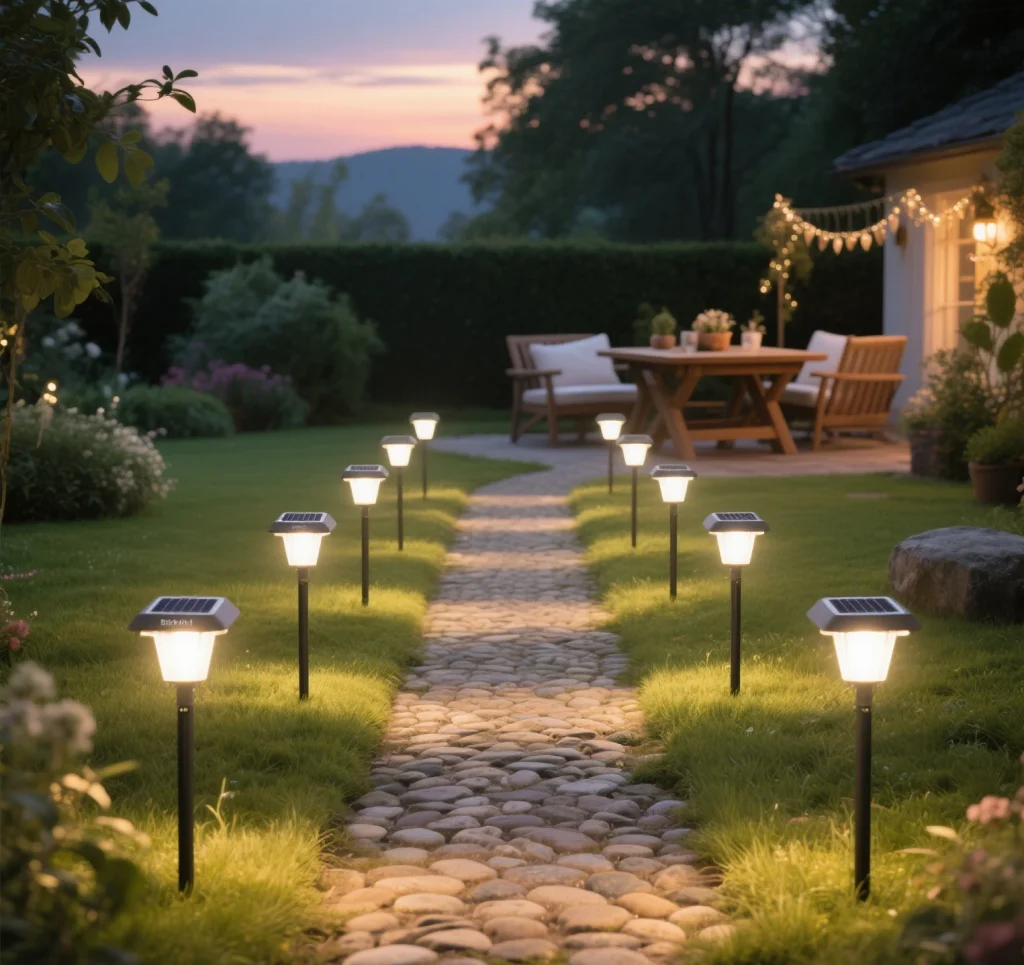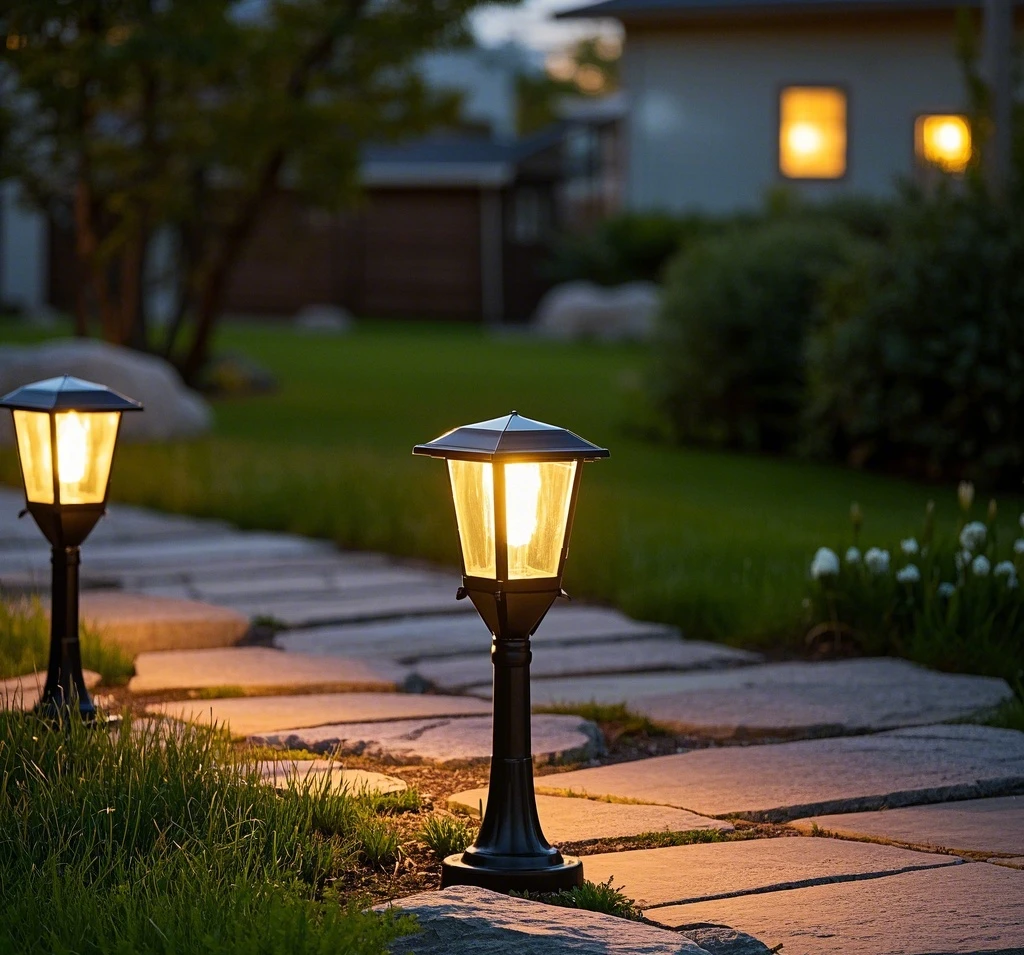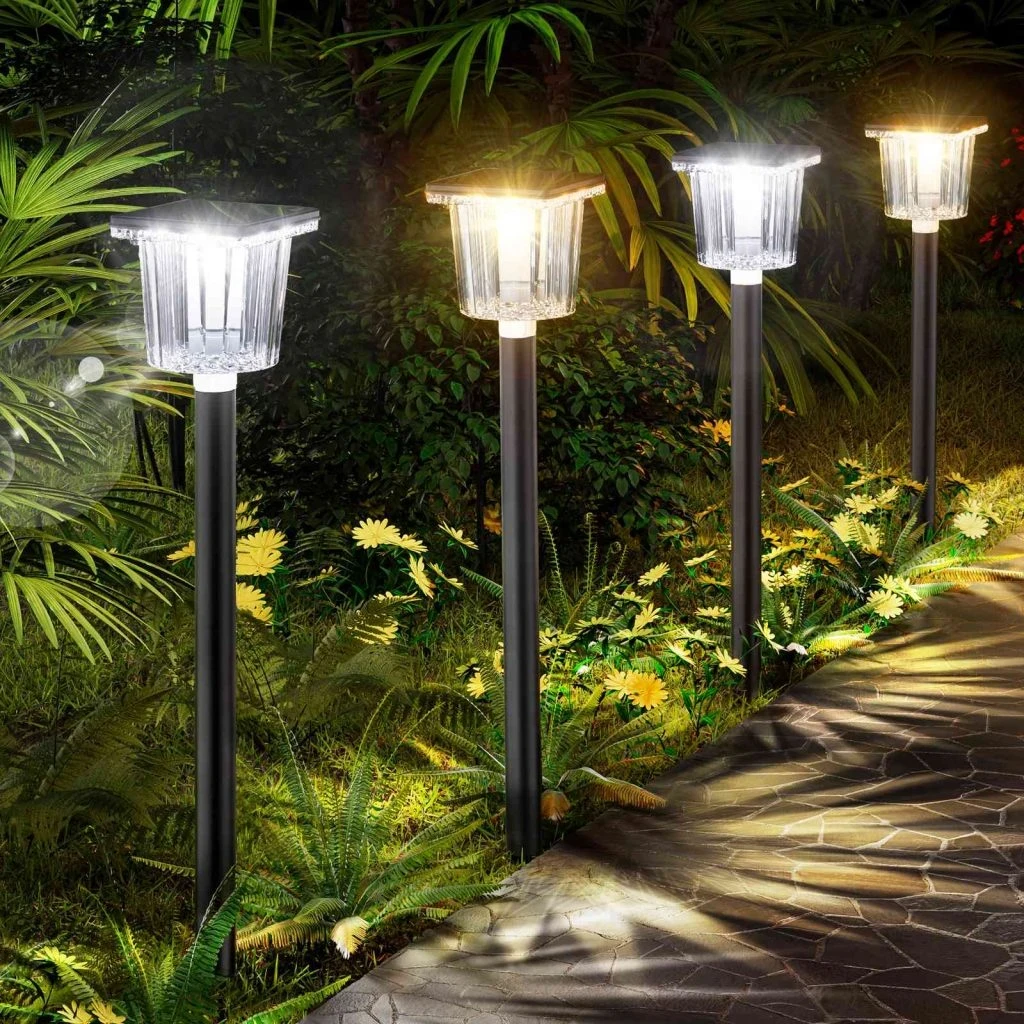Solar garden lights enhance outdoor spaces with eco-friendly illumination, but improper installation can lead to safety risks like electrical shocks, structural failures, or fires. This comprehensive guide outlines five critical hazards to avoid during installation—electric shock, pole collapse, fire risks, battery mishandling, and environmental damage—while providing actionable tips to ensure safe and efficient solar lighting setups.

Understanding the Importance of Safe Installation
Proper installation of solar garden lights is essential for safety and performance. These systems rely on photovoltaic panels, batteries, and wiring, which, if mishandled, can pose significant risks. By addressing potential hazards during setup, you can protect property, prevent injuries, and ensure long-term reliability. This guide combines industry best practices with innovative safety strategies to help you install solar lights securely.
Hazard 1: Preventing Electrical Shock
Electrical shock is a primary concern when installing solar garden lights, even though they operate on low-voltage DC systems. Improper wiring or exposure to water can create hazardous conditions.
Safe Wiring Practices
- Use Weatherproof Components: Choose solar lights with IP65 or higher ratings to protect against water ingress. Brands like EcoFlow offer weather-resistant solar lighting systems designed for outdoor durability.
- Secure Connections: Ensure all electrical connections are insulated with waterproof connectors. Avoid exposed wires, which can short-circuit in wet conditions.
- Grounding: While most solar garden lights don’t require grounding, verify that high-wattage systems are properly grounded to prevent stray currents.
Regularly inspect wiring for wear or damage, especially after heavy rain or snow, to maintain a shock-free system.
Hazard 2: Avoiding Pole Collapse
Unstable mounting can cause solar light poles to topple, posing risks to people and property. This is particularly common in areas with strong winds or loose soil.
Secure Mounting Techniques
- Choose Stable Bases: Use concrete anchors or heavy-duty mounting bases for solar garden lights. Ensure the base is rated for the pole’s height and weight.
- Check Soil Conditions: Assess soil stability before installation. In loose or sandy soil, use deeper anchors or consult a professional for foundation support.
- Wind Resistance: Select poles designed for high wind loads, especially in coastal or open areas. Manufacturers like Goal Zero provide solar lights with wind-resistant designs.
Perform periodic checks to ensure poles remain secure, particularly after extreme weather events.
Hazard 3: Mitigating Fire Risks
While solar lighting systems are generally safe, improper battery handling or faulty components can lead to fire hazards. Overheating batteries or damaged wiring are common culprits.
Fire Prevention Strategies
- Use Quality Batteries: Opt for lithium iron phosphate (LiFePO4) batteries, which are less prone to overheating than other types. Brands like Renogy offer reliable solar power systems with safe battery options.
- Install Overcurrent Protection: Use fuses or circuit breakers to prevent electrical overloads. Ensure the system’s voltage and current ratings match the manufacturer’s specifications.
- Ventilation: Place battery compartments in well-ventilated areas to dissipate heat. Avoid enclosing batteries in tight, unventilated spaces.
Regularly monitor battery temperature and replace any damaged components immediately to reduce fire risks.
Hazard 4: Safe Battery Handling and Storage
Batteries are critical to solar garden lights, but mishandling during installation or maintenance can lead to leaks, explosions, or reduced lifespan.

Battery Safety Tips
- Follow Manufacturer Guidelines: Always adhere to the manufacturer’s instructions for battery installation and charging. Overcharging or improper connections can damage solar batteries.
- Protect Against Extreme Temperatures: Store batteries in a cool, dry place during installation to prevent thermal runaway. Use insulated compartments for outdoor setups.
- Recycle Properly: Dispose of old or damaged batteries at certified recycling centers to avoid environmental harm. Companies like Battle Born Batteries provide guidance on safe battery disposal.
Wear protective gloves and eyewear when handling batteries to avoid chemical exposure.
Hazard 5: Minimizing Environmental Damage
Improper installation of solar garden lights can harm local ecosystems, particularly if components are placed in sensitive areas or if hazardous materials are mishandled.
Eco-Friendly Installation Practices
- Avoid Sensitive Areas: Install solar panels and lights away from wetlands, wildlife habitats, or protected areas to minimize ecological disruption.
- Use Non-Toxic Materials: Choose solar lighting systems made with recyclable, non-toxic materials. Check product specifications for eco-friendly certifications.
- Proper Waste Management: Dispose of packaging, old components, and batteries responsibly to prevent soil or water contamination.
By prioritizing environmental considerations, you contribute to the sustainability of solar technology while maintaining safety.
Additional Safety Features in Modern Solar Lights
Advancements in solar technology have introduced safety-focused features that enhance the reliability of solar garden lights:
- Smart Controllers: Many systems now include smart controllers that monitor battery health, detect faults, and automatically shut down during malfunctions.
- Motion Sensors: These reduce energy consumption and minimize overheating by activating lights only when needed, lowering the risk of electrical issues.
- Anti-Slip Coatings: Some solar panels feature coatings that prevent water or ice buildup, reducing the risk of electrical shorts in wet conditions.
Investing in solar lights with these features can significantly improve safety and performance.
Case Study: Safe Solar Lighting in Urban Gardens
In a recent project in Seattle, a community garden installed solar garden lights using LiFePO4 batteries and wind-resistant poles. By following strict safety protocols—such as securing poles with concrete anchors and using weatherproof connectors—the project achieved zero incidents of electrical shock or pole collapse over two years. This case underscores the importance of combining quality components with proper installation techniques.
Cost and Safety Trade-Offs
While high-quality solar lighting systems may have higher upfront costs, they offer long-term safety and savings. For example, LiFePO4 batteries last up to 10–15 years, compared to 3–5 years for lead-acid batteries, reducing replacement costs. Additionally, solar garden lights eliminate electricity bills, making them a cost-effective choice for outdoor lighting.
When budgeting, consider trusted brands like EcoFlow for portable solar power systems or Renogy for durable, safe components. These brands prioritize safety and reliability, ensuring peace of mind.
Maintenance for Ongoing Safety
Regular maintenance is key to sustaining the safety and performance of solar garden lights:
- Inspect Components: Check wiring, batteries, and poles monthly for signs of wear, corrosion, or damage.
- Clean Panels: Remove dirt, leaves, or snow from solar panels to maintain charging efficiency. Use a soft cloth and mild cleaner to avoid scratches.
- Test Safety Features: Verify that motion sensors, smart controllers, and overcurrent protection systems are functioning correctly.
By incorporating maintenance into your routine, you can prevent hazards and extend the lifespan of your solar lighting system.
Environmental and Community Benefits
Beyond safety, solar garden lights offer environmental and community benefits. They reduce reliance on fossil fuels, lowering carbon emissions, and provide reliable lighting for public spaces, enhancing safety and aesthetics. In community gardens or parks, solar lights promote sustainability while creating inviting, well-lit environments.
Conclusion
Installing solar garden lights safely requires careful planning and attention to detail. By avoiding key hazards—electrical shock, pole collapse, fire risks, battery mishandling, and environmental damage—you can ensure a secure and efficient solar lighting system. Choose high-quality components from brands like Goal Zero or Battle Born Batteries, follow best practices for installation and maintenance, and leverage modern safety features to maximize performance. With these strategies, your solar garden lights will provide safe, sustainable illumination for years to come.

Comments